Sunday 10 August 1941
In the Army Group North sector, the German offensive toward Novgorod at the northern tip of Lake Ilmen faces strong opposition. The Germans hope to create a continuous front, using the lake, between Novgorod and Staraya Russa at the southern tip of the lake - but the Soviets have good defensive positions. If the Germans succeed, they can wheel directly to the north and invest Leningrad. At the close of the day, General Halder notes in the OKH war diary that "The attack is making slow progress in bad weather and against very stiff enemy opposition." Another attack by Panzer Group 4 on the Luga River is doing a bit better.
SS-Gruppenführer und Generalleutnant der Schutzpolizei Arthur Mülverstedt, Commander of the 4th SS Polizei Division, is killed in action by artillery fire - a growing Soviet priority, as Stalin believes wholeheartedly that artillery is the "Queen of Battle."
 |
| A German half-track driver, August 1941 (AP Photo). |
In the Army Group Center sector, the German XXIV Corps of Second Army is attacking but the Soviets are adroitly juggling their forces to meet successive attacks. This leaves some areas very poorly defended, such as between Bryansk and Roslavl - but the Germans have to move quickly to take advantage of the gaps. The Soviets always seem to plug the holes at the last minute, a pattern that is becoming irritating to the German high command.
There are bypassed Soviet laggards throughout the German area of control. General Ivan Boldin, the deputy to the (deceased) General Dmitry Pavlov, leads one such rag-tag group of 1650 officers and men in the Western Front sector. Boldin today, after a 45-day trek, leads his men back across to Soviet lines east of Smolensk. Stavka Order No. 270 praises Boldin. The Soviets turn Boldin into a propaganda hero. His boss Pavlov is shot for his troops' failures, while Boldin becomes a big hero - such are the fortunes of war.
General Halder notes in the OKH war diary that "the situation on the northern wing ... (Sixth Army) had badly deteriorated." He notes with some surprise that "the enemy is attempting to cross the Dniepr." This should not be, as it is the Germans who are supposed to be advancing, not the Soviets. He notes many "enemy railroad movement from Poltava to Kyiv," usually a sign of a coming enemy offensive. Given the precarious situation, Field Marshal von Rundstedt prudently postpones an attack on Kyiv and orders Sixth Army to go over to the defensive - a first in the southern sector.
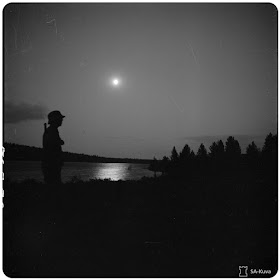 |
| A Finnish soldier stands guard beside a lake. Kiestinki, White Karelia, August 10, 1941 (SA-Kuva). |
After that inauspicious beginning, things just get progressively for the Red Air Force crews. Soviet Flak gunners shoot down one of the planes, another turns back with engine trouble, and other misfortunes plague the flight. Ultimately, eleven Pe-8s and three Yer-2s struggle to Berlin, but, unlike the first raid, the Berlin air defenses are primed for revenge. Flak damage and more engine problems take their toll on the way home, and only 7 of the original 17 planes makes it back to Leningrad. Overall, it is a disaster, mangling Stalin's supply of big bombers and depressing morale among the crews tasked with flying future missions.
The Luftwaffe sends an air raid over Moscow, but it is a shadow of earlier efforts, more a nuisance raid than a grand London-style attack. Overall, the Luftwaffe claims 54 Soviet planes today. Over most areas of the front, the Luftwaffe can achieve air superiority at will - but it is a very long front, and the Luftwaffe can't be everywhere at the same time.
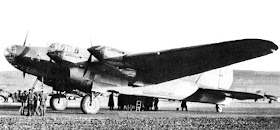 |
| A Petlyakov Pe-8 (TB-7). Eleven of these long-range, four-engine bombers bomb Berlin on 10 August 1941. Pe-8 is the only 4-engine bomber used by the Red Air Force during World War II. |
 |
| Wreck of what is believed to be Soviet submarine S-6 off the coast of Sweden (@EPA). |
Soviet minesweeper T-201 "Zaryad" his a mine off Suursaari while escorting a convoy from Tallinn to Kronstadt. The mine explodes, sinking T-201 and damaging 7484-ton troopship Vyacheslav Molotov, which has thousands of wounded men aboard.
Soviet submarine S-4 (Lt Cdr Abrosimov) attacks a large tanker off the Polish coast but misses.
According to some sources, Soviet submarine SC-307 (Lt. Cmdr. Petrov) sinks U-144 (Kptlt. Mittelstaedt) today. Other sources state this occurs on 9 August. The submarine sinks west of Hiiumaa, Estonia. All 28 men on board perish.
A Soviet convoy departs from Revel carrying an estimated 3500 Soviet troops. It proceeds to Suursaari and then Kronstadt, Kotlin Island.
 |
| Soviet submarine S-6. |
U-451 (Kptlt. Eberhard Hoffmann), on its first patrol out of Kirkenes, torpedoes and sinks 441-ton Soviet patrol boat SKR-27 "Zhemchug" west of Kanin (between Cape Svyatoy Nos and Cape Kanin Nos). By some accounts, it is a 550-ton corvette. All 61 crewmen on board the Zhemchug perish.
German 460-ton fishing trawler M-1102 HAW Müller sinks off Lindesnes, Vest-Agder, in southern Norway. By some accounts, this is due to a mine laid by the RAF. Other accounts claim it is due to RAF bombing. Some other Danish fishing boats also go missing around this time, perhaps for the same reason (whatever it is).
The RAF bombs and damages German patrol boat V.1506 near Ostend, Belgium.
German E-boat S-49 torpedoes and sinks British freighter Sir Russell off Dungeness in the English Channel. Some sources place this sinking on 11 August.
Damaged 1392-ton Norwegian freighter Dagny I, in tow of trawler Leicester City, sinks between the Faroes and Scotland. All of the crew are picked up by Leicester City.
U-79 (Kptlt. Wolfgang Kaufmann), on its second patrol out of Lorient, spots Allied Convoy HG-69 and reports it to BdU in Paris, which redirects U-boats to intercept it.
American Task Group TG.2.5, on a neutrality patrol, arrives in Bermuda. It is led by the aircraft carrier USS Yorktown.
Convoy HX-144 departs from Halifax bound for Liverpool, Convoy SC-40 departs from Sydney, Cape Breton, Nova Scotia bound for Liverpool.
U-440 is launched.
 |
| U-440 (shown) is launched on 10 August 1941. |
The Luftwaffe attacks Alexandria, Suez, Port Said, and Ismailia after dark.
At Malta, morale is a huge concern of the British administration. Mail service has been a priority because many soldiers have loved ones back in England who are being subjected to Luftwaffe bombing (though not so much recently). Accordingly, Governor Dobbie sends a message to the War Department in London requesting an official Post Office Section, staffed by experienced postal employees, stating: "Prompt delivery and despatch of the very limited and intermittent mail is considered absolutely essential for the maintenance of morale."
A Maryland on photo-reconnaissance crashes on approach at Malta due to engine failure, killing two of the crew and injuring a third.
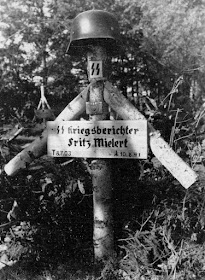 |
| SS Kriegsberichter Fritz Mielert, KIA August 10, 1941. |
Spy Stuff: FBI Director J. Edgar Hoover announces that his organization has uncovered German plots throughout Latin America - in Argentia, Chile, and Cuba. The FBI isn't really equipped for such international investigations, and there is some doubt in retrospect whether these "plots" are actually fabrications by British Intelligence to create an atmosphere of crisis in Washington and the Americas. However, MI6 does its work extremely artfully and knows how to pull off "Black Ops" without being caught.
Allied/Turkish Relations: The Britsh and Soviet Union submit identical statements to the Turkish foreign embassy. Both countries agree to go to the assistance of Turkey and "observe the territorial integrity of the Turkish republic." It is an odd statement that is sort of a mirror image of the Tripartite Pact - except Turkey does not sign anything. Hitler still holds out high hopes that he can draw Turkey into the Axis by dangling the chance for it to even old scores with old enemy Russia, but the Turks officially are maintaining a purely neutral stance (though the British strongly suspect that it was aiding the Vichy French during the recent campaign in the Levant).
 |
| President Roosevelt and Prime Minister Churchill attend services aboard HMS Prince of Wales, 10 August 1941. |
This service was felt by us all to be a deeply moving expression of the unity of faith of our two peoples, and none who took part in it will forget the spectacle presented that sunlit morning on the crowded quarterdeck – the symbolism of the Union Jack and the Stars and Stripes draped side by side on the pulpit; the American and British chaplains sharing in the reading of the prayers; the highest naval, military, and air officers of Britain and the United States grouped in one body behind the President and me; the close-packed ranks of British and American sailors, completely intermingled, sharing the same books and joining fervently together in the prayers and hymns familiar to both.After a brief inspection topside, Roosevelt returns to his heavy cruiser USS Augusta (CA-31) aboard destroyer USS McDougal (DD-358). Churchill then visits the Augusta and has dinner with the President.
 |
| A detective examining a body apparently in New York City, 10 August 1941 (unknown photographer in the Daily News). |
Japanese 16,975-ton liner Asama Maru, which got caught between Hawaii and San Francisco when the United States imposed its oil embargo, arrives back in Yokohama, Japan with all of her 98 passengers and cargo.
China: Japanese air raids on Chungking continue on a daily basis. The Chinese air force defenders, stuck with poor Soviet equipment and facing the superior Japanese Mitsubishi A6M fighter and fast bombers, is losing ground. Chinese Captain Ou Yangdeng (no. 7261) of the Chinese 21st PS is killed while flying with the remnants of the 5th PG. There is relief on the horizon for the Chinese, as the American Volunteer Group "Flying Tigers" are starting to embark for China, but they are heading for Burma and will need months to work up into combat readiness.
 |
| Benny Goodman and his Orchestra on August 10, 1941, in the Chicago, Illinois Hotel Sherman. |
Women and children have been killed and even the sufferers in hospitals have not been spared. Yet hardship has only steeled our hearts and strengthened our resolution.The Queen praises the "many roles" that women play in the war effort and concludes with a plea "for our children":
The things for which we will fight to the death are no less sacred, and to my mind, at any rate, your generosity is born of your conviction that we fight to save a cause that is yours no less than ours; of your high resolve, however great the cost and however long the struggle, liberty, and freedom, human dignity and kindness shall not perish from the earth, I look to the day when we shall go forward, hand in hand, to build a better, a kinder, a happier world for our children, May God bless you all.As with many themes enunciated during World War II, this resonates through subsequent decades.
August 1941
August 2, 1941: Uman Encirclement Closes
August 3, 1941: Bishop von Galen Denounces Euthanasia
August 4, 1941: Hitler at the Front
August 5, 1941: Soviets Surrender at Smolensk
August 6, 1941: U-Boats in the Arctic
August 7, 1941: Soviets Bomb Berlin
August 8, 1941: Uman Pocket Captured
August 9, 1941: Atlantic Conference at Placentia Bay
August 10, 1941: Soviet Bombers Mauled Over Berlin
August 11, 1941: Rita Hayworth in Life
August 12, 1941: Atlantic Charter Announced
August 13, 1941: The Soybean Car
August 14, 1941: The Anders Army Formed
August 15, 1941: Himmler at Minsk
August 16, 1941: Stalin's Order No. 270
August 17, 1941: Germans in Novgorod
August 18, 1941: Lili Marleen
August 19, 1941: Convoy OG-71 Destruction
August 20, 1941: Siege of Leningrad Begins
August 21, 1941: Stalin Enraged
August 22, 1941: Germans Take Cherkassy
August 23, 1941: Go to Kiev
August 24, 1941: Finns Surround Viipuri
August 25, 1941: Iran Invaded
August 26, 1941: The Bridge Over the Desna
August 27, 1941: Soviets Evacuate Tallinn
August 28, 1941: Evacuating Soviets Savaged
August 29, 1941: Finns take Viipuri
August 30, 1941: Operation Acid
August 31, 1941: Mannerheim Says No
2020
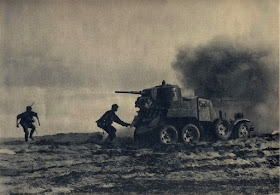
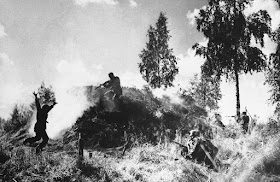
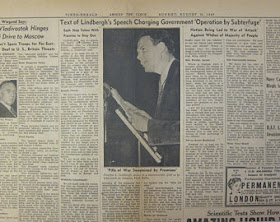
No comments:
Post a Comment